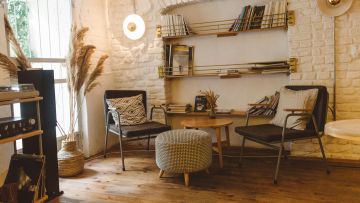Moving into a new house, whether in a bustling city like Orlando, FL or elsewhere, marks the beginning of a fresh chapter. The space may be empty, unfamiliar, and lacking the warmth that defines a true home.
Transforming this blank canvas into a welcoming retreat requires more than placing furniture in rooms. It involves blending emotional connections with practical choices that bring comfort, stability, and personality to the environment.
From carefully handling the moving process to incorporating personal touches, every step contributes to creating a living space that feels truly yours.
Starting Strong: Smooth Transitions and Skilled Assistance
The journey to turning a new house into a home begins long before the first box is unpacked. A smooth transition reduces stress, prevents property damage, and allows for a positive emotional start in the new space. Packing, transporting, and arranging belongings may seem manageable, but a lack of experience can lead to unnecessary complications. Fragile items, heavy furniture, and valuable keepsakes need specialized care to arrive intact. This is why hiring professionals plays such an essential role.
A reliable moving team brings more than trucks and manpower. Skilled movers know how to organize and secure possessions, manage time efficiently, and navigate unforeseen challenges. Their expertise allows homeowners to focus on emotional readiness rather than physical exhaustion. To ensure a stress-free relocation, always choose movers with a reputation for care and professionalism. Many people prefer hiring local long distance movers in Orlando, FL, because they’re better equipped to handle delicate and complex moves.

Establishing a calm and organized transition sets the tone for what comes next. Arriving at a clean, damage-free home with possessions properly placed helps foster an immediate sense of belonging, which is essential when turning a new space into something that feels personal and safe.
Infusing Personality Through Thoughtful Layouts
Once the move is complete, arranging the space is the first step in making it feel like home. Furniture placement should reflect daily habits and emotional comfort rather than simply following design trends. Begin with functionality—ensure that essential items are positioned to support routines. For example, a reading chair near a natural light source or a dining area arranged to encourage conversation contributes to an inviting atmosphere.
Balance is crucial when arranging furniture. Rooms should feel open and accessible, with clear pathways to prevent clutter. Mixing existing furniture with new pieces can also create a blend of familiarity and freshness. Personal comfort should guide every choice; a room should not feel staged but rather lived in, even if minimalistic.
Color schemes also play a powerful role. Soft, neutral tones often create a calming effect, while vibrant accents bring warmth and energy. Selecting a color palette that resonates emotionally establishes a comforting backdrop that subtly influences mood.
Establishing Emotional Anchors with Personal Artifacts
A house feels like a home when it reflects the personalities and stories of the people living in it. Displaying personal artifacts is one of the most effective ways to achieve this. Photographs, heirlooms, and travel souvenirs add layers of memory to a new space, connecting the past to the present.
Art pieces, whether paintings or handmade crafts, carry emotional significance when chosen thoughtfully. Items that evoke happy memories or represent personal achievements should occupy prominent spots. These visual cues trigger positive emotions, reminding residents of who they are and what they value.
Creating Warmth Through Lighting and Textures
Lighting has a profound psychological impact. Harsh, overly bright lights can feel cold and impersonal, while soft, layered lighting creates warmth and intimacy. Combining different light sources, such as table lamps, floor lamps, and wall sconces, allows control over the mood of each room.
Textures add another layer of comfort. Rugs, cushions, and throws introduce softness that invites relaxation. Materials like cotton, wool, and linen provide tactile warmth, while wooden furniture or decorative accents add natural depth. Using a mix of textures creates a space that feels welcoming rather than sterile.
Even small changes, such as placing a cozy blanket on a couch or adding a textured rug underfoot, subtly influence the way a room feels. These details encourage lingering, relaxation, and emotional connection with the environment.
Building Familiarity Through Routine and Scent
Emotional comfort grows through familiarity, and routine plays a significant role in this process. Establishing daily habits—such as enjoying morning coffee in a specific corner or unwinding every evening in a favorite chair—creates a subconscious sense of stability. Over time, these repeated actions turn ordinary rooms into personal retreats.
Scent also contributes significantly to emotional bonding with a space. Familiar smells can instantly trigger feelings of comfort and security. Candles, essential oils, or even the aroma of home-cooked meals can infuse the air with familiarity. Choosing a signature scent for the home helps reinforce emotional ties, making every return feel like coming back to a personal haven.
Strengthening Bonds Through Shared Experiences
If the home is shared with family or friends, collective experiences help shape its emotional character. Cooking together, arranging furniture as a team, or simply spending relaxed evenings in communal spaces builds memories that infuse the house with warmth.
Even solitary dwellers can create experiences that foster emotional bonds with the space. Hosting intimate gatherings, celebrating milestones, or simply dedicating time to personal hobbies within the home strengthens the feeling of belonging. A house becomes a true home when it witnesses shared laughter, meaningful conversations, and personal milestones.
Continuous Evolution: Allowing the Home to Grow
A home should evolve alongside its residents. Personal tastes, routines, and priorities change over time, and the living space should adapt accordingly. Periodically rearranging furniture, rotating decorative pieces, or adding new personal items keeps the space feeling fresh without erasing its emotional history.
Allowing the home to reflect personal growth creates a living environment that always feels relevant and connected. A space that changes organically with its occupants tells an ongoing story, making every corner a reminder of life’s progression.
A new house becomes a true home when it feels alive with personality, warmth, and emotional resonance. Careful attention to the moving process, thoughtful organization, personal artifacts, comforting textures, and evolving routines all contribute to this transformation. Over time, the walls absorb laughter, memories, and quiet moments of reflection, turning an unfamiliar structure into a cherished sanctuary.
















